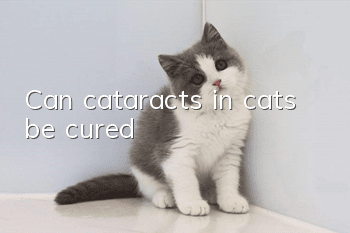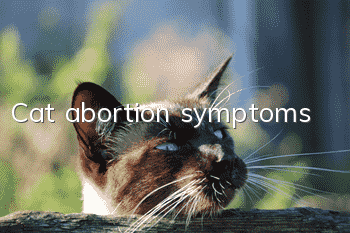Feline pancreatitis symptoms, diagnosis and treatment

I don’t know if you know about cat pancreatitis. Feline pancreatitis is actually one of the most common diseases, but most cat poop collectors may not be aware of it at all, because they may interpret the cat’s inappropriate actions as “vomiting”. Hairballs" or "picky eaters" and other insignificant reasons. However, many cats’ condition often worsens due to atypical symptoms and owner’s neglect. If pancreatitis is not diagnosed and treated in time, the morbidity and mortality rates are relatively high, and the process is very painful! Today, let’s talk about the cat’s pancreas Inflammation:
What is feline pancreatitis?
The pancreas is a gland in the digestive system of the body. Its main function is to secrete pancreatic juice. Pancreatic juice is discharged from the pancreatic duct under normal circumstances. When various causes cause pancreatic juice to flow poorly or reflux, the pancreas and surrounding tissues will be damaged. The disease is caused by "self-digestion" of digestive enzymes secreted by the pancreas.
According to the severity of onset, it can be divided into acute pancreatitis and chronic pancreatitis. Mild pancreatitis often does not involve other organs, has no complications, and is a self-limiting disease; however, severe pancreatitis can lead to bleeding, necrosis, multiple organ failure, complications, and life-threatening symptoms! In recent years, pancreatitis has been on the rise. The rate is very high, and the course of the disease generally changes from acute to chronic, and from mild to severe.
Symptoms of pancreatitis in cats
So what are the symptoms of pancreatitis in cats? Why is pancreatitis so difficult to detect? It’s because the symptoms of pancreatitis are really non-specific. The most common symptoms of acute pancreatitis in cats are:
Mental illness
Anorexia and weight loss
Some may have symptoms such as vomiting, diarrhea, constipation, dehydration, ascites and difficulty breathing, but not every cat will have it
If accompanied by diabetes, symptoms of polydipsia, polyphagia, and polyuria will occur.
Symptoms of dehydration may also occur, and if accompanied by liver disease, jaundice may occur.
Chronic pancreatitis also has no specific clinical symptoms, and it is generally believed that most pancreatitis has no clinical symptoms!
If clinical symptoms occur, most are non-specific, such as lethargy, anorexia, and weight loss
If there is concurrent inflammatory bowel disease, soft stool or diarrhea will occur
If inflammatory bowel disease spreads to the stomach, chronic vomiting will occur. If combined with cholangiohepatitis, jaundice may occur.
Causes of pancreatitis in cats
So, what kind of cats are more likely to suffer from pancreatitis?
1. High-fat obesity diet!
Nowadays, many cat owners want to keep cats fat and white, and the fat in the diet is relatively high. Unreasonable diet has a huge impact on the occurrence of pancreatitis! At present, obesity is the most common dog, Feline nutritional disorders, dogs and cats are more likely to develop pancreatitis than humans. Long-term consumption of high-fat foods will stimulate the secretion of large amounts of pancreatic juice, and a large amount of pancreatic juice will reflux in the pancreatic duct, thereby damaging the pancreas.
2. Caused by other diseases:
Due to the special physiological structure of the feline pancreas, fatty liver and biliary tract diseases (such as cholangitis, biliary obstruction, inflammatory bowel disease) are often accompanied by pancreatitis; pancreatic duct obstruction (such as tumors) and inflammatory bowel disease are also often caused The occurrence of pancreatitis.
3. Ischemia, hypercalcemia, and high triglycerides caused by hypotension or anesthesia are also among the causes of pancreatitis.
4. Many drugs and toxins are also considered to be related to feline pancreatitis, such as organophosphates, esters, calcium, etc.
5. There are also some risk factors related to causing pancreatitis: they include
Blunt injuries (such as car accidents, falling from buildings),
Trauma,
Parasitic infections (such as Toxoplasma gondii, flukes)
Infectious pathogen infections (such as feline calicivirus, feline infectious peritonitis virus, feline distemper and feline herpes virus), etc.
However, obesity is still the most common cause of pancreatitis in cats in our daily lives. Cats should also keep in good health!
Diagnosis of feline pancreatitis
First of all, how is pancreatitis diagnosed?
1. Serum biochemical examination: Increases in amylase and lipase are often used as diagnostic indicators of feline pancreatitis. However, even if there is pancreatitis in some cases, the levels of these two enzymes will not exceed the standard. Therefore, amylase and lipase may not be specific for the diagnosis of pancreatitis. Currently, pancreatitis-specific tests, such as trypsinogen-activating peptide and pancreatic-specific lipase, have been used in clinical diagnosis
2. X-ray examination and B-ultrasound examination. Feline acute pancreatitis will reveal abnormalities on X-rays and ultrasound.
How to treat cat pancreatitis after it is determined?
1. Drug treatment:
Drug treatment focuses on symptomatic treatmentTreatment and supportive care include fluid therapy, electrolyte therapy, nutrition, antiemesis, analgesia, antibiotic therapy, and management of any possible underlying factors.
2. Food therapy:
Feline pancreatitis usually causes anorexia and weight loss, which are also the main factors causing poor prognosis. In order to avoid stimulating the secretion of exocrine secretion from the pancreas, long-term fasting is required. However, fasting for more than 3 days will cause worsening of malnutrition. At this time, appropriate nutrition and calories must be provided to prevent or improve malnutrition. and possible fatty liver disease. Cats that are vomiting or have abdominal pain should avoid oral feeding and can choose enteral nutrition, or a nasal-esophageal or gastric tube for nutrition. If you have appetite and do not vomit, you can choose high-protein and low-fat food to feed directly.
Finally, pancreatitis must be detected and treated early! Once your cat is found to have symptoms such as lethargy, vomiting, and diarrhea, you should seek medical treatment as soon as possible. After pancreatitis is diagnosed, the treatment principle is to remove the cause, control symptoms, improve pancreatic function and treat complications!
- Why do cats only meow at people but rarely at other cats of the same species?
- What will happen if a cat eats raw eggs?
- Which houseplants and flowers are toxic to cats?
- Can I keep a cat while pregnant?
- What is the normal weight of a cat?
- What is the general price of a blue cat with folded ears? Price of a blue cat with folded ears!
- How to train a cat to poop on the toilet
- At what age can a cat brush its teeth?
- Why do cats sometimes have yellow discharge from their ears?
- How are fold-eared cats bred? Once you know it, you will realize how cruel humans are!



